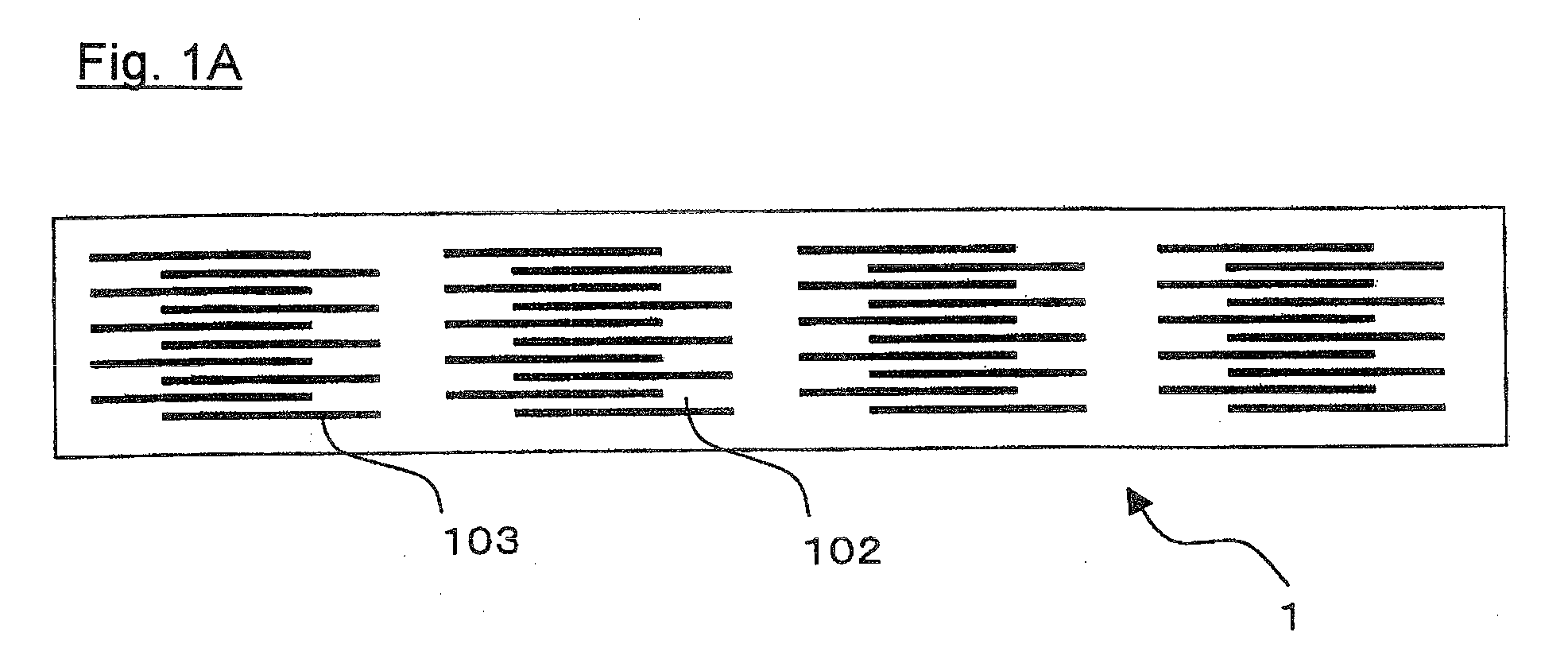Methods of manufacturing ceramic board and electronic device
a technology of electronic devices and ceramic boards, which is applied in the direction of manufacturing tools, dielectric characteristics, ceramic layered products, etc., can solve the problems of difficult production efficiency and facilities of individual devices, small dimension of ceramic electronic devices having circuit functions (conductor patterns), and inability to obtain flat ceramic boards. , to achieve the effect of preventing warpage, excellent electric and mechanical properties, and efficient manufacturing
- Summary
- Abstract
- Description
- Claims
- Application Information
AI Technical Summary
Benefits of technology
Problems solved by technology
Method used
Image
Examples
example 1
Green Ceramic Board
[0075]First, ceramic material powder, glass material powder and organic vehicle were mixed and kneaded to prepare a green sheet paste. The organic vehicle included binder, organic solvent, and if needed, plasticizer, dispersant, etc.
[0076]Next, conductive powder, glass material powder and organic vehicle were mixed and kneaded to prepare a conductive paste. The organic vehicle included binder, organic solvent, and if needed, plasticizer, dispersant, etc.
[0077]The above-obtained green sheet paste was coated on polymer film such as PET film by doctor blade method and dried. On the dried green sheet, the above-obtained conductive paste was printed and dried to produce a green sheet in which a conductor pattern having a thickness of 2.0±0.2 μm was formed.
[0078]A plurality of the above green sheets were produced and laminated to produce a green ceramic board which green chips to be electronic device elements were formed within.
[0079]Unit
[0080]As a fired porous ceramic ...
example 2
[0092]Except for changing the height of the void space provided between the bottom surface of the furnace and the honeycomb setter plate at the side of the lower surface of the green ceramic board to the value shown in Table 2, and changing the porosity of the honeycomb setter plate to 70%, a unit was formed, followed by each step of binder removal and firing, as in Example 1. For the warpage amount, the firing stain and the thickness of the internal electrode of the obtained ceramic board, same evaluations were done as in Example 1. The results are shown in Table 2.
TABLE 2Ceramic boardFiring stainVoid spaceWarpageThicknessSample No.[mm]amount [μm]of IE* [mm]100131No2.1110.595No1.812185No1.813280No1.714574No1.7151068No1.8165065No1.71710065No1.8*IE = internal electrode
[0093]From Table 2, when the void space was 0 mm (Sample 10), it was confirmed that warpage of the ceramic board was larger than 100 μm. This might be because heat conduction was not uniform in the honeycomb setter plat...
example 3
[0094]Except for changing the porosity of the honeycomb setter plate to 70%, and adjusting the thickness of the setter plate to change the applied load per unit area of the upper surface of the green ceramic board to the value shown in Table 3, a unit was formed, followed by each step of binder removal and firing, as in Example 1. For the warpage amount, the firing stain and the thickness of the internal electrode of the obtained ceramic board, same evaluations were done as in Example 1 and the following evaluation was further performed. The results are shown in Table 3.
[0095]Split / Crack in Ceramic Board
[0096]The ceramic board after firing was visually observed whether there was split / crack. No split / crack was preferable. The results are shown in Table 3.
TABLE 3Ceramic boardLoad per unitFiring stainarea of boardWarpageThicknessSample No.[g / cm2]amount [μm]of IE* [mm]split / crack180.2121NoNo1.8190.397NoNo1.7200.672NoNo1.8210.963NoNo1.8221.352NoNo1.8231.655NoNo1.7242.560NoNo1.8253.0—NoO...
PUM
| Property | Measurement | Unit |
|---|---|---|
| length | aaaaa | aaaaa |
| porosity | aaaaa | aaaaa |
| temperature | aaaaa | aaaaa |
Abstract
Description
Claims
Application Information
 Login to View More
Login to View More - R&D
- Intellectual Property
- Life Sciences
- Materials
- Tech Scout
- Unparalleled Data Quality
- Higher Quality Content
- 60% Fewer Hallucinations
Browse by: Latest US Patents, China's latest patents, Technical Efficacy Thesaurus, Application Domain, Technology Topic, Popular Technical Reports.
© 2025 PatSnap. All rights reserved.Legal|Privacy policy|Modern Slavery Act Transparency Statement|Sitemap|About US| Contact US: help@patsnap.com



